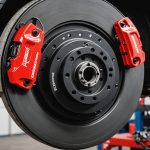Understanding Compatibility
When considering the integration of a GPS tracker with your BMW C400X, it is crucial to understand its electrical and electronic system compatibility. The BMW C400X is known for its advanced electronics, including a robust CAN bus system, which necessitates selecting a GPS tracker designed to communicate effectively without interfering with the scooter’s functionality.
Key Specifications
Before purchasing a GPS tracker, assess several critical specifications to ensure seamless performance. It is essential that the tracker is compatible with the CAN bus network of the C400X. Checking the power supply requirements is also vital; the BMW C400X typically operates on a 12-volt system, so the GPS device must support this voltage. Additionally, confirm that the tracker supports the Bluetooth or NFC protocols, depending on your connectivity needs.
Additional reading : Essential Tips for Properly Installing Aftermarket Fog Lights on Your Yamaha Tracer 900
Recommended GPS Trackers
Selecting a recommended GPS tracker ensures it functions harmoniously with the BMW C400X. Some well-suited options include models like the Garmin Zumo 396 and the TomTom Rider 500. These devices offer CAN bus compatibility, easy installation, and user-friendly interfaces. They are specifically curated to meet the electronic demands of modern scooters like the BMW C400X, allowing riders to enjoy reliable tracking without complications.
Installation Procedure
Understanding the GPS Tracker Installation process is essential for efficient functioning and accurate positioning.
In the same genre : Step-by-Step Guide to Conducting an Engine Compression Test on Your Honda CBR600RR for Optimal Performance
Required Tools for Installation
To embark on the installation procedure, ensure you gather the necessary tools. You will need:
- Screwdriver set: Different types might be necessary for securing the device.
- Wire strippers: For safely exposing the wires during connections.
- Multi-meter: To test electrical connections and ensure everything is safe and functional.
- Adhesive or mounting brackets: These are crucial for firmly attaching the GPS tracker to a surface.
Step-by-Step Installation Process
Follow this step-by-step guide for a smooth installation process:
-
Position: Determine the placement of your GPS tracker. It’s usually mounted under the dashboard or in the vehicle’s rear section.
-
Connection: Carefully connect the tracker to the vehicle’s power supply. Reference your multi-meter to ensure the wiring is correct.
-
Test Function: Power the system to verify the GPS tracker’s operational status.
Safety Precautions to Observe
It’s critical to implement safety measures. Disconnect the battery before you start to prevent shock or short circuits. Wearing gloves while handling wires is advised to protect your hands from cuts and abrasions. Always ensure your working environment is dry to avoid any electrical hazards.
Optimal Placement for Functionality
The performance of a GPS tracker largely hinges on strategic placement, directly influencing its signal strength and reliability. When installed on a BMW C400X, it is crucial to ensure that the tracker is positioned where signal obstruction is minimised, typically enhancing the device’s accuracy and responsiveness.
Areas on the BMW C400X that are ideal for installation include open spaces with minimal metallic obstruction. These spots ensure that the tracker can maintain consistent communication with GPS satellites. Ideally, locations like the under-seat compartment, while easily accessible, might shield the tracker and impede signal reception.
When considering installation, a fine balance must be achieved between concealing the GPS tracker for security and allowing it to function effectively. Hiding it securely within the bike’s bodywork can prevent theft while ensuring it doesn’t obstruct the tree line or sky view crucial for optimal performance. Accessibility remains essential, enabling quick adjustments or replacements without extensive disassembly.
To optimise functionality, use materials that do not shield signals, like plastic or rubber, and avoid encapsulating the tracker in dense metal surfaces. Regular checks can further ensure the device stays in good condition whilst maintaining its unobstructed positioning for peak signal strength.
Recommended GPS Tracker Models
Choosing the best GPS trackers for your BMW C400X is crucial for ensuring optimal security and performance. Several top-rated models cater specifically to motorcycle enthusiasts, providing features that enhance long-term reliability.
One highly recommended option is the Monimoto 7, praised for its ease of installation and reliable performance. Its compact design complements the C400X without affecting aesthetics. Users appreciate its responsive tracking system and the peace of mind it offers. Additionally, the battery life extends up to a year, minimizing maintenance hassle.
The TrakKING Adventure is another standout model. It features real-time tracking and instant notifications in case of movement without authorisation. Owners have lauded its seamless integration with the BMW C400X, noting its consistent performance and the assurance of vehicle safety it offers.
Comparing features: Monimoto 7 offers a longer battery lifespan, while TrakKING emphasizes immediate alerts and real-time updates. Both models incorporate GPS and SIM technology, but the user preference often hinges on desired functionality and response time.
Feedback highlights the importance of feature set in driving user satisfaction. Thus, understanding one’s priority—be it extensive tracking, longevity, or real-time alerts—can dramatically influence the optimal motorcycle GPS choice.
Troubleshooting Common Issues
When it comes to GPS trackers, troubleshooting and maintenance tips are key to ensuring optimal operation.
Common Installation Problems
Installing a GPS tracker may sometimes present challenges. A frequent issue is incorrect wiring, leading to device malfunction. To avoid this, consult the installation manual thoroughly, ensuring all connections are secure. Another installation problem is an obstructed GPS signal, often caused by placing the tracker in areas blocked by metal or electronic interference. For best results, situate the tracker in a location with a clear view of the sky, and away from any electrical components.
Signal Loss Solutions
Experiencing signal loss with your GPS tracker? First, verify that the tracker’s software is up-to-date. Updates often contain improvements for handling signal issues. Additionally, inspect the GPS antenna for any damage or obstructions. A frayed or coiled antenna reduces signal quality, so ensuring it’s straight and unblocked is vital. If the problem persists, consider relocating the tracker to a less obstructed area.
Regular Maintenance Recommendations
Maintaining GPS trackers involves periodic checks to ensure all parts function correctly. Regularly examine connections to prevent loose fittings that may cause disruptions. Cleaning the device to remove any dust or debris will also help in maintaining reliable performance. Conduct software checks and update the system regularly to keep it efficient and responsive.
Legal Considerations for Installing GPS Trackers
Understanding the legal implications of GPS tracking is crucial to ensure compliance and avoid potential legal consequences. Different regions have varying privacy laws that govern the use and installation of GPS trackers on vehicles. In many areas, installing a GPS tracker without consent can be unlawful, especially if it infringes on an individual’s right to privacy.
Key considerations include the purpose of the GPS tracking and whether it aligns with ethical guidelines and privacy laws in your jurisdiction. For instance, if you’re installing a GPS tracker on a vehicle you personally own, laws are generally more lenient. However, tracking someone else’s vehicle without their knowledge or consent is often prohibited.
It’s essential to familiarize yourself with local privacy laws before proceeding with a GPS installation. Research and consult legal experts if necessary to ensure that your actions are compliant. Following these guidelines not only protects you legally but also fosters trust with those affected by the tracking.
When using GPS trackers, aim for ethical use, such as tracking your own fleet of vehicles for business efficiency or ensuring the safety of family members with consent. Ethical considerations are as important as legal compliance, fostering responsible use of technology while respecting individuals’ rights.










